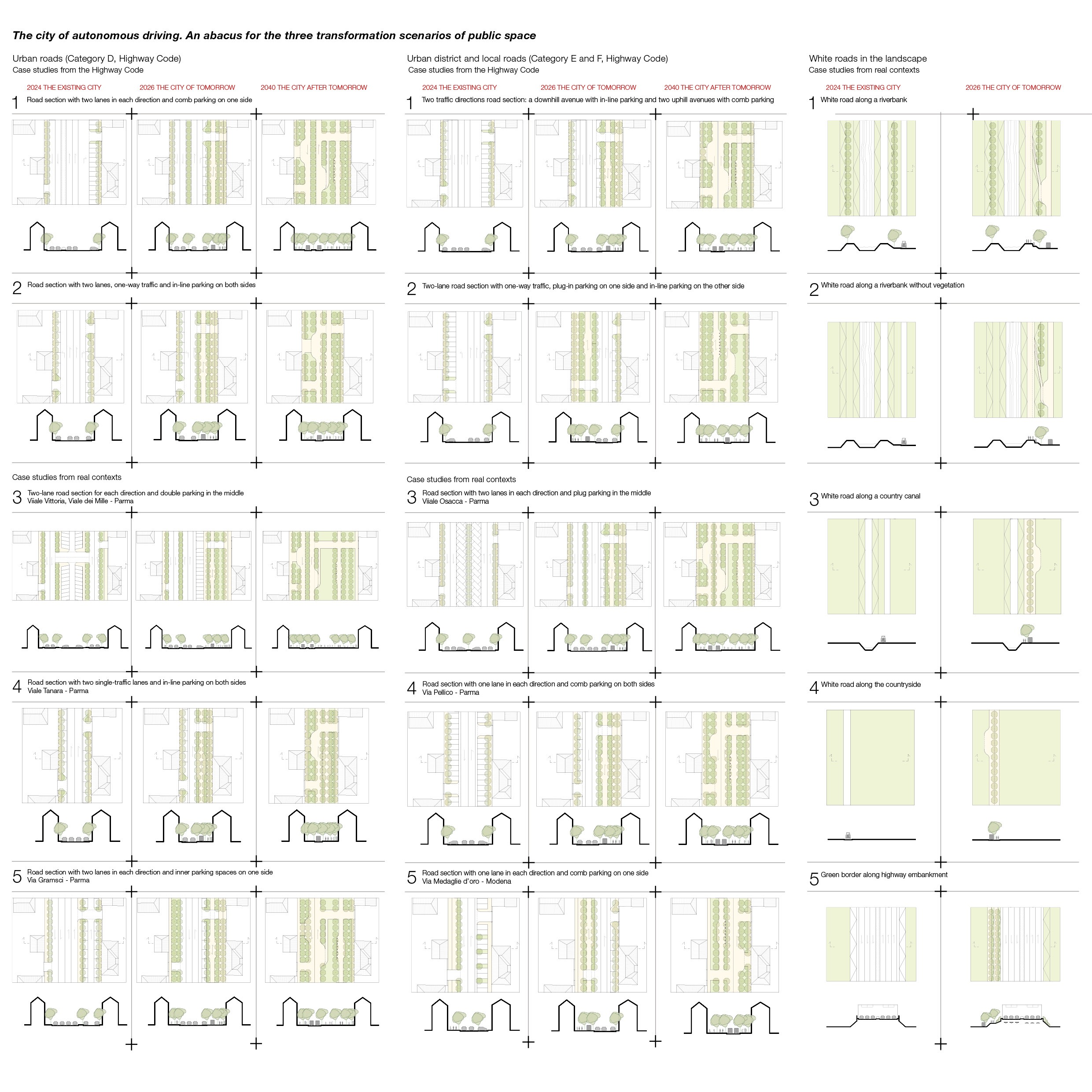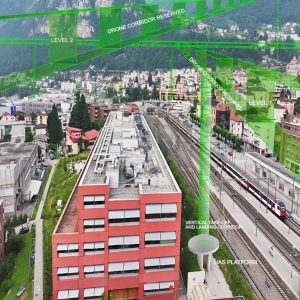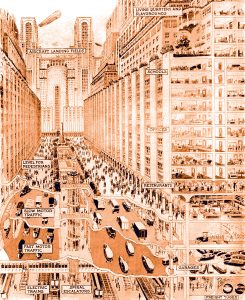The legacy of an urban design led by the infrastructural project, which precluded the use of urban space as a relational place, is reflected today in settlements interrupted in their physical and social dimension. This condition calls for a paradigm shift – from the ‘city of cars’ to the ‘city of people’ – which aims to restore a human scale to settlements by rationalising infrastructure, that will be aided by the application of the Fourth industrial revolution technologies (Costi, 2022).
In this scenario, the potential of driverless vehicles, as a shared public transport service, is evident for the possibility of rethinking the areas used for mobility and mending the system of open spaces through a network of cycle-pedestrian routes conceived as a sequence of public spaces (Costi, 2025).
Pilot projects carried out by the Smart City 4.0 Sustainable Lab explored the ‘promise’ of autonomous driving for urban regeneration (Bobisse, Pavia 2019). The implementation of a multimodal soft mobility strategy of the case studies showed that the design of the ‘city of autonomous driving’ takes the form of an urban landscape design. Verification of the Emilian case studies, through the ‘Urban Strategic Design’ methodology, it was possible to derive four design guidelines for the reconnection between natural and man-made environment at the territorial and urban scales. The emerging issues concern the possibility of assimilating autonomous routes to a cycle-pedestrian greenways winding through the urban fabric, capable of activating the transformation of entire parts of the city within a strategy that combines light infrastructure, landscape and architecture. At the scale of places, the architectural project will make it possible to enhance the interstitial spaces between the built-up area and the infrastructures, and will identify along the soft mobility frame a series of areas that, due to their strategic position or identity character, may constitute a system of places in which the new mobility hubs may trigger regeneration processes.
Bibliography
- Bobisse, R. & Pavia, A. (2019). Automatic for the city: designing for people in the age of the driverless car. Londra, RIBA Publishing.
- Costi, D. (2022). Designing the City of People 4.0. Reflections on strategic and sustainable urban design after Covid-19 pandemic. The City Project Series V. 1, Springer.
- Costi, D. (2025). Manuale di Progetto Urbano Strategico per la Smart City come Città delle persone 4.0. Siracusa, LetteraVentidue.



